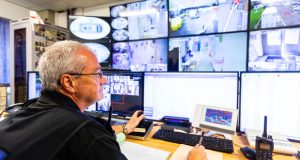 Genetec’s Nick Smith argues that integrating access security into one unified system provides simpler and more effective facilities monitoring and management
Genetec’s Nick Smith argues that integrating access security into one unified system provides simpler and more effective facilities monitoring and management
Businesses of all sizes spend considerable amounts of time, energy and capital to safeguard their facilities, to ensure they operate efficiently and are being properly maintained. While the central task in facilities management is keeping the company’s physical properties operating smoothly, it also requires the flexibility to adjust to fresh demands and security challenges, in order to respond appropriately.
The systems that make up the building environment often require varying levels of intervention to run optimally. This alone raises several challenges, ranging from simple daily interventions to complex solutions that involve multiple parties. The key to tackling these issues lies in enhancing the situational awareness and responsiveness of facilities managers and security operators – but to do so they require the right technology.
A central responsibility for FMs is to know who is accessing the building. The way in which people get into the workplace has changed dramatically over recent years, having evolved from a simple key-lock system to personalised photo-badges and finally to fully fledged biometric access control. This evolution has been necessary, especially in today’s threat-filled climate.
A modern access control solution not only ensures designated people can enter the building, but also that the right people have access to the right areas. Employees, customers and maintenance staff may all have business to do in the same building, but should by no means have access to the same areas. Advanced access control not only enhances the security of the building but significantly improves operations, making it as seamless and effortless as possible. A good access control solution should work unnoticed, allowing visitors of the building to come and go where they need to – uninterrupted, and with minimal delay.
When an individual requires access to the building or when an emergency arises, decisions and actions need to happen quickly. However, this is currently challenged by outdated and siloed systems which present data separately, leading to significantly slower processes and lost time. With many operations increasingly moving to the cloud, running multiple systems separately becomes complicated and can cause issues; all this information is needed from both physical and digital siloed systems, which then need to be assembled into one clear picture.
We argue that a unified security solution, comprising access control, video surveillance, intrusion detection, communications, and whatever else a company may require, is key to overcoming this issue, as it can provide a complete, real-time picture, enabling facilities managers and security officials to react to situations and incidents more efficiently.
A UNIFIED SYSTEM
Integrating all operations into one unified system with a single interface provides much simpler and more effective facilities monitoring and management. Having one monitoring application at a workstation or in a security operations control room allows system operators to oversee the entire building and surrounding area they are responsible for, ensuring greater awareness and operational insights right before their eyes. This not only saves time, but significantly improves decision-making and reaction time, augmenting the safety of the premises and the people occupying them.
While efficiency is obviously important, functionality is too, as use experience goes a long way in contributing to a secure network. When selecting an appropriate solution, you should look at how well it integrates with other systems. Security and IT professionals are often keen to migrate to an IP-based access control solution, but feel this isn’t an option due to previous investments in security hardware.
What many fail to realise is that the access control industry is currently moving away from closed proprietary systems which only work with specific manufacturers whose hardware is only compatible with one software platform. Instead, the trend is towards supporting an open infrastructure, where the latest software can be installed to existing hardware, enabling upgrades to be made as needed – without having to sacrifice current hardware.
A modern, IP-based access control system must be compatible with the wide variety of hardware on the market, and, as mentioned earlier, also work with older hardware. This infrastructure allows for flexibility in choosing systems and the ability to upgrade both software and hardware as needed, and according to budgetary restrictions. By supporting the ever-growing collection of open architecture access control modules, readers, controllers, and electronic locks, an access control system safeguards the long-term viability of your access control investment.





